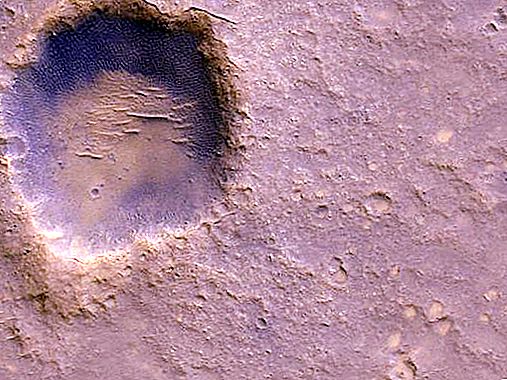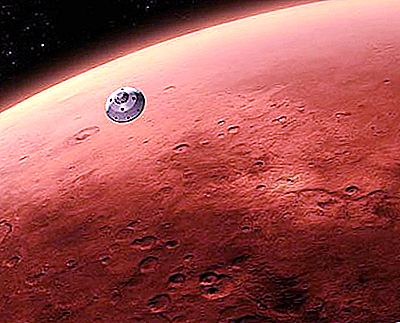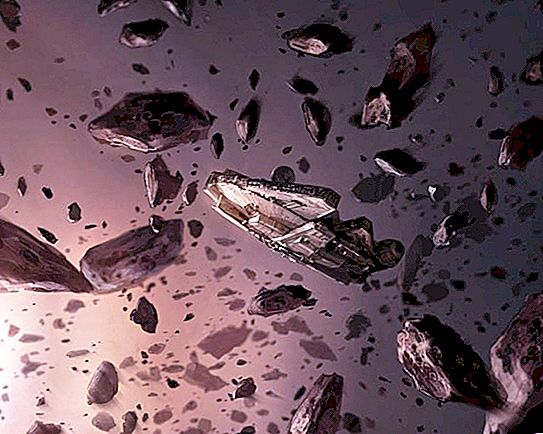In the desert region of the Pacific Ocean there is the so-called cemetery of spaceships (48 ° 52 'S and 123 ° 23' W) - Point Nemo, named exactly in honor of the well-known literary hero of the adventure and fiction work of Jules Verne (another name is the Pole of inaccessibility). The nearest land - a small atoll Dusi - is located 2688 km north of Point Nemo. It was here, under the thickness of the waves of the ocean, that 145 “Progresses” of the Russian Federation, 4 Japanese HTV space vehicles and 5 ATV cargo spacecraft belonging to the European Space Agency found their last refuge. Also, the spacecraft cemetery stores the remains of 6 Salutes and the Mir space station.

No reuse
Naturally, not a single space station (or space ship) is resting in the Pacific Ocean intact; all of them were absorbed by the water column in the form of separate significant fragments. For most spaceships, contact with the atmosphere is extremely fatal; they do not have special effective thermal protection, unlike manned descent modules. The spaceship cemetery in the Pacific Ocean has taken into its bosom those orbital stations and space trucks that no one had originally planned to return to Earth for reuse. Such spaceships, once in the lower dense layers of the Earth’s atmosphere, are destroyed and burned. But individual fragments reach the earth's surface, therefore, the designation of the burial area of decommissioned and near-earth orbit ships ("cemetery spaceships") is justified and appropriate.
Emergency situations
The history of Point Nemo has two emergencies. In 1979, the wreckage of the Skylab American space station, having not reached the conditional square of the water area, hit the western part of mainland Australia. And in 1991, the remnants of the Russian Salyut-7 orbital station partially fell in Argentina. Fortunately, both unforeseen cases did without significant damage and casualties. A spaceship cemetery is a dangerous neighborhood. That is why in early spring 2001, during the decommissioning of the Mir orbital complex, the authorities of Japan, Australia and the Fiji Islands strongly recommended that their citizens refrain from walking and take shelter in the premises.
Space disposal
Every year, the cemetery of spaceships in the Pacific Ocean is replenished with several dozen spacecraft. According to experts, the practice of utilizing space debris using cargo ships, adopted by the international community, does not significantly harm the ecology of the planet. Floods are subject to stations and ships that have exhausted their resources, their compartments are loaded with waste products from space expeditions and other garbage. Typically, the surface of the Pacific Ocean is reached by individual refractory elements of the ship (most of them burn out without a trace in the dense layers of the atmosphere), which after immersion fall to a depth of more than 4 kilometers.
UFO "Cemetery"
After receiving the next pictures sent by the Curiousity rover from the Red Planet, most amateur ufologists became interested in the clearly visible strange craters on the surface of Mars. After careful research, they put forward a number of assumptions regarding their origin. One version assures the public that these craters are traces of the landing of spacecraft of aliens - the UFO Sightings Daily blog informs about this. According to one of the participants in the analysis, similar craters were discovered earlier on the moon. At the same time, anomalies in our natural satellite also failed to find a logical explanation. According to the unanimous opinion of ufologists, the discovered relief forms are of artificial origin and are either peculiar cosmodromes or a cemetery of spaceships. Photos submitted to the public are still published on the UFO blog. According to another version, the recesses discovered are nothing more than repair shops in which the UFOs underwent maintenance. But the hypothesis that the Curiousity rover filmed a spaceship cemetery on Mars, has gained great popularity.
Asteroid Vesta
In the asteroid belt located between Jupiter and Mars, a celestial body with a diameter exceeding 550 km was discovered. This asteroid, called West scientists, according to one popular hypothesis, is the remnant of the collapsed planet Phaeton, once inhabited by intelligent creatures. About a year ago, the Dawn automatic probe (USA) crept up at a fairly close distance, and the NASA collection was replenished with detailed and expressive images of its surface. Ufologists, having studied the photographs, discovered rather interesting, strange objects on the surface of Vesta. The photographs allegedly depict a dilapidated disk-shaped UFO, partially hidden under a layer of soil, a semblance of an airplane and other strange designs. Scientists have no reason to assume that these objects are of terrestrial origin. Most likely, these are traces of the existing Phaeton civilization or another UFO cemetery. The fact is that experts discovered flying structures that are very different from each other, this allowed them to assume that the ships belong to different alien civilizations. So not only on Mars found a cemetery of spaceships, but also on the distant West.








